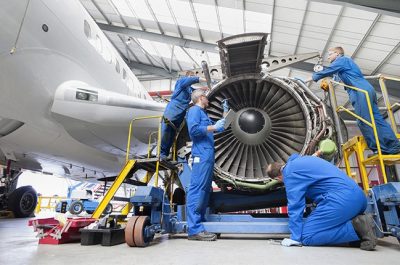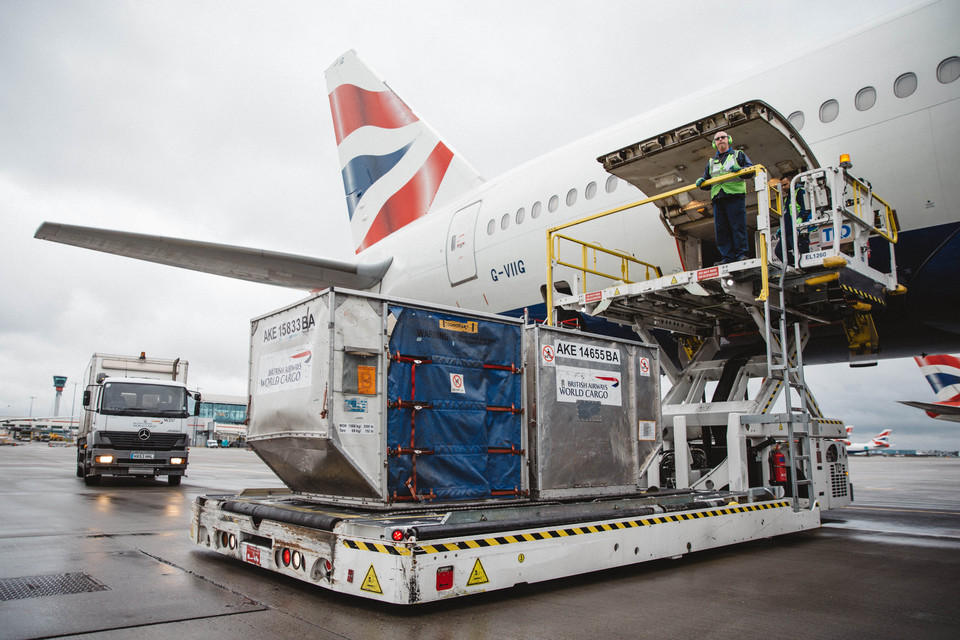Free Aerospace Structural Engineer-Analyst course (4months)
Aerospace Structural Engineer-Analyst:
Brief Job Description: Aerospace Structural Engineer- Analyst is responsible for aerospace structural analysis, testing and justification.
Personal Attributes: The individual should have analytical ability, attention to detail and systematic thought process. He should have good communication and interpersonal skills and should be able to work as part of a team.


Documents for knowledge sharing:
Performance Criteria
PC1. establish with appropriate people the purpose, scope, formats and target
audience for the documents
PC2. access existing documents, language standards, templates and
documentation tools from your organization’s knowledge base
PC3. liaise with appropriate people to obtain and verify the information required
for the documents
PC4. confirm the content and structure of the documents with appropriate people
PC5. create documents using standard templates and agreed language standards
PC6. review documents with appropriate people and incorporate their inputs
PC7. submit documents for approval by appropriate people
PC8. publish documents in agreed formats
PC9. update your organization’s knowledge base with the documents
PC10. comply with your organization’s policies, procedures and guidelines when creating documents for knowledge sharing.
Knowledge and Understanding:

Organisational Context:
KA1. your organization’s policies, procedures and guidelines for creating documents for knowledge sharing
KA2. the purpose and scope of the work to be carried out and the importance of keeping within these boundaries
KA3. who to involve when developing documents and their roles and
responsibilities
KA4. intended audiences for documents
KA5. your organization’s knowledge base and how to access and update this
KA6. the importance of verifying information obtained for documents and how to do this
KA7. the importance of reviewing documents with others
KA8. how to use feedback to improve documents
KA9. your organization’s processes and procedures for approving and publishing
documents

KA10. methods and techniques used when working with others
KA11. tools, templates and language standards available and how to use these
KA12. the work element for documents created
KA13. how to convert the work element into meaningful documents by proper
abstraction and categories suited to standard templates.
Technical Knowledge:

KB1. the purpose and scope of the work to be carried out and the importance of
keeping within these boundaries
KB2. sources of information and reference materials for creating documents
KB3. different styles used in documents, including:
your organization’s house style
types and styles of documents
templates
KB4. different ways of structuring documents and how to select the best structure
for the agreed content
KB5. how to check and make corrections to documents for common editorial
problems and errors, including:
deviations
factual accuracies
linguistic mistakes
discrepancies
errors
ambiguities in content
formatting
KB6. the importance of obtaining approval for documents and who to obtain this from.
Core Skills/ Generic Skills:
| Writing Skills |
| You need to know and understand how to: SA1. complete accurate well written work with attention to detail SA2. communicate with others in writing. Reading Skills You need to know and understand how to: SA3. follow guidelines, procedures, rules and service level agreements Oral Communication (Listening and Speaking skills) You need to know and understand how to: SA4. listen effectively and orally communicate information accurately SA5. ask for clarification and advice from others Professional Skills Decision Making You need to know and understand how to: SB1. identify anomalies in data SB2. make a decision on a suitable course of action SB3. time management SB4. multi-tasking Plan and Organise You need to know and understand how to: SB5. plan and organize your work to achieve targets and deadlines SB6. manage your time effectively SB7. handle multiple tasks concurrently Customer Centricity You need to know and understand how to: SB8. check that your own and/or your peers’ work meets customer requirements SB9. work effectively in a customer facing environment SB10. build and maintain positive and effective relationships with customers Problem Solving: You need to know and understand how to: SB11. seek clarification on problems from others SB12. apply problem-solving approaches in different situations SB13. refer anomalies to the line manager Analytical Skills You need to know and understand how to: SB14. analyze data and activities SB15. configure data and disseminate relevant information to others SB16. pass on relevant information to others Critical Thinking Skills You need to know and understand how to: SB17. provide opinions on work in a detailed and constructive way SB18. apply balanced judgments to different situations Attention to Detail You need to know and understand how to: SB19. check your work is complete and free from errors SB20. get your work checked by others Team Working You need to know and understand how to: SB21. work independently and collaboratively SB22. work effectively in a team environment SB23. contribute to the quality of team working Technical Skills SC1. use information technology effectively to input and/or extract data accurately SC2. identify and refer anomalies in data SC3. store and retrieve information SC4. keep data secure SC5. agree objectives and work requirements SC6. use coding standards SC7. keep up to date with changes, procedures and practices in your role  Work effectively in a team Performance Criteria Support the work team PC1. display courteous and helpful behaviour at all times PC2. take opportunities to enhance the level of assistance offered to colleagues PC3. meet all reasonable requests for assistance within acceptable workplace timeframes PC4. complete allocated tasks as assigned PC5. seek assistance when difficulties arise PC6. use questioning techniques to clarify instructions or responsibilities, PC7. identify and display a non-discriminatory attitude in all contacts with customers and other staff members. Maintain personal presentation PC8. observe appropriate dress code and presentation as required by the workplace, job role and level of customer contact PC9. follow personal hygiene procedures according to organisational policy. Develop effective work habits PC10. interpret, confirm and act on workplace information, instructions and procedures relevant to the particular task PC11. interpret, confirm and act on legal requirements with regards to anti- discrimination, sexual harassment and bullying PC12. ask questions to seek and clarify workplace information PC13. plan and organise daily work routine within the scope of the job role PC14. prioritise and complete tasks according to required timeframes PC15. identify work and personal priorities and achieve a balance between competing priorities Knowledge and Understanding Organisational Context KA1. policies and procedures relating to the job role KA2. the value system of the organisation KA3. employee rights and obligations KA4. the reporting hierarchy and escalation matrix Technical Knowledge KB1. ask questions to identify and confirm requirements KB2. follow routine instructions through clear and direct communication KB3. use language and concepts appropriate to cultural differences KB4. use and interpret non-verbal communication KB5. the scope of information or materials required within the parameters of the job role KB6. consequences of poor team participation on job outcomes KB7. work health and safety requirements Core Skills/ Generic Skills Writing Skills, On the job the individual needs to be able to: SA1. complete documentation accurately SA2. write simple reports when required Reading Skills On the job the individual needs to be able to: SA3. read information accurately SA4. read and interpret data sheets Oral Communication (Listening and Speaking skills) The user/individual on the job needs to know and understand how to: SA5. listen to and orally communicate information with all concerned Professional Skills Decision Making On the job the individual needs to be able to: SB1. make appropriate decisions regarding the responsibilities of the job role Plan and Organise The user/individual on the job needs to know and understand how to: SB2. monitor efficient functioning of all activities SB3. plan and organise work to achieve targets and deadlines Customer Centricity The user/individual on the job needs to know and understand how to: SB4. communicate with customers and other stakeholders in a courteous manner SB5. maintain effective work relationship Problem Solving The user/individual on the job needs to know and understand how to: SB6. identify trends/common causes for errors and suggest possible solutions to the supervisor / management SB7. identify and correct errors Analytical Thinking The user/individual on the job needs to know and understand how to: SB8. analyse best possible solutions (cost, time, effort, etc.) suited for operations Critical Thinking The user/individual on the job needs to know and understand how to: SB9. concentrate on task at hand and complete it without errors SB10. apply balanced judgments to different situations  Organisational safety and information security: Performance Criteria Comprehending the safety and information security procedur es PC1. comply with your organization’s IT policies and procedures for safety of data and information PC2. a dhere to the organisation’s policies pertaining to accesses granted, usage, modification of any information or recording or destruction of information PC3. report any identified breaches of data or information in any form to the authority as described by the organisation PC4. report any theft of intellectual property according to the organisation policy PC5. record, control the document version and take appropriate approvals for the documents, plans or drawings according to organisational hierarchy PC6. follow your organization’s safety procedures at workplace and act promptly, calmly, and efficiently in case of disruption PC7. recommend improvement related to safety and security at the workplace PC8. comply to any health and safety requirements set by an organisation Knowledge and Understanding Organisational Context KA1. regulatory requirements and organization’s procedures for health, safety and information security KA2. what is meant by an Intellectual property (IP), including the identification and prevention of theft at workplace KA3. how and when to maintain version and document control, post seeking approvals from the competent organisational authority KA4. the 5S principles (Seiri, Seiton, Seiso, Seiketsu, and Shitsuke) for efficient productivity and quality at workplace Technical Knowledge KB1. IP management, including filing patents/copyrights/design registrations, documentation and control KB2. design standards, practices, procedure and methods followed by your organisation KB3. how to report breaches in safety and information security KB4. cyber security policy of your organisation KB5. procedures for evacuation of staff at workplace KB6. reporting procedures related to health, safety and security Core Skills/ Generic Skills Writing Skills You need to know and understand how to: SA1. complete accurate, well written work with attention to detail Reading Skills You need to know and understand how to: SA2. read instructions, guidelines, procedures, rules and service level agreements Oral Communication (Listening and Speaking skills) You need to know and understand how to: SA3. listen effectively and orally communicate information accurately Professional Skills Decision Making You need to know and understand how to: SB1. make a decision on a suitable course of action Plan and Organise You need to know and understand how to: SB2. plan and organize your work to meet health, safety and security requirements Customer Centricity You need to know and understand how to: SB3. build and maintain positive and effective relationships with colleagues and customers Problem Solving You need to know and understand how to: SB4. apply problem solving approaches in different situations Analytical Skills You need to know and understand how to: SB5. analyse data and activities Critical Thinking Skills You need to know and understand how to: SB6. apply balanced judgments to different situations  Analysis and testing of aerospace structural components / assemblies/subassemblies Performance Criteria Analysis and testing of aerospace structural components/ assemblies/subassemblies PC1. review customer structural requirements and lead decomposition to lower level requirements PC2. conceptualise, model, qualify, and document aircraft structural components and systems PC3. preliminary & detail design activities related to stress and F&DT justification, analyse and document aircraft structural components justification results PC4. establish the structural requirements and constraints PC5. apprehend the applicable structural standards for an aircraft PC6. select and implement appropriate metallic, non-metallic and composites material while analysing structures PC7. create global and sub models. Perform internal load generation using global FE model and detail analysis using sub structuring approach using global and sub models. PC8. perform structural calculations such as buckling, natural mode and frequencies, fatigue, flutter speed, reserve factor, stress analysis on various aircraft sections and design concepts for appropriate aircraft loads PC9. analyse primary and secondary structures by using appropriate standard hand calculation methods and FE analysis. Various analyses to be performed are free-free analysis, normal modes, linear and nonlinear analysis, buckling and post buckling analysis. PC10. analyse the components/features not captured in the FE model, justify them using detailed hand calculations. Example – Joint and fastener calculations, attachment lugs etc. PC11. perform fatigue life and crack growth analysis through selection of critical primary and secondary locations on structure PC12. comply with your organisation’s policies, standards, procedures and guidelines for analysis while performing stress and F&DT justifications PC13. work with respective designers and structural analysis engineers for design optimisation. PC14. carry out optimisation on the finalised design concepts and make/suggest amendments, where required PC15. document and maintain the basis of structural calculations and selection of appropriate structure concept PC16. undertake mathematical modelling and 3D modelling for verification of output and safety factor PC17. prepare test specimens, strain gage locations, their numbers based on simulation results. PC18. prepare test plans and procedure, conduct static, dynamic and fatigue test, document test results and correlate the test with simulation. PC19. obtain approvals from appropriate stress authority PC20. work within the aircraft modification team(s), to assist with the generation of stress documentation and interface with the customer on required changes PC21. conform to configuration management and change control procedures and policies. PC22. conduct/participate in stress reviews and customer audits PC23. interact with internal and external customers to present analysis development/ outputs PC24. co-ordinate within the team and effectively communicate with all levels of the organisation. PC25. general Aerospace analysis process & standard methods. PC15. document and maintain the basis of structural calculations and selection of appropriate structure concept PC16. undertake mathematical modelling and 3D modelling for verification of output and safety factor PC17. prepare test specimens, strain gage locations, their numbers based on simulation results. PC18. prepare test plans and procedure, conduct static, dynamic and fatigue test, document test results and correlate the test with simulation. PC19. obtain approvals from appropriate stress authority PC20. work within the aircraft modification team(s), to assist with the generation of stress documentation and interface with the customer on required changes PC21. conform to configuration management and change control procedures and policies. PC22. conduct/participate in stress reviews and customer audits PC23. interact with internal and external customers to present analysis development/ outputs PC24. co-ordinate within the team and effectively communicate wit h all levels of the organisation. PC25. general Aerospace analysis process & standard methods. Knowledge and Understanding Organisational context KA14. your organization’s policies, procedures and guidelines for creating documents for knowledge sharing KA15. the purpose and scope of the work to be carried out and the importance of keeping within these boundaries KA16. who to involve when developing documents and their roles and responsibilities KA17. intended audiences for documents KA18. your organization’s knowledge base and how to access and update this KA19. the importance of verifying information obtained for documents and how to do this KA20. the importance of reviewing documents with others KA21. how to use feedback to improve documents KA22. your organization’s processes and procedures for approving and publishing documents KA23. methods and techniques used when working with others KA24. tools, templates and language standards available and how to use these KA25. the work element for documents created KA26. how to convert the work element into meaningful documents by proper abstraction and categories suited to standard templates Technical Knowledge KB1. Aircraft construction and functionality for civil and military transport KB2. Aircraft materials load, characteristics and performance KB3. Flight operations / mission profile KB4. Feasibility studies, loads-supported, material, design history, best design practices and failure modes for skin, stringers, frames, floor beams and panels, intercostal, cross beams bulk heads, keel beam and empennage. KB5. Loads, load path and Free body Diagram (FBD) in moderately complex situations KB6. Basic solid mechanics: analysis of stress and strain, bending, torsion and buckling KB7. Advanced solid mechanics: shear flow (applied to panels with cut-outs), shear centre, asymmetric bending, torsional buckling, flexural- torsional buckling, warping of beam sections, winger beam theory, tension-shear interaction, shear -compression interaction. Limit post buckling KB8. best practices, standards, certifications and policy KB9. Basic analysis of joints – riveted and bolted joints design and best practices KB10. Hand calculations: floor beam design, prying analysis of bolted joint, bulk head analysis, critical joint analysis KB11. Elements of composite bolted joint fundamentals KB12. FEM and load derivation for various aircraft sections of a typical aircraft KB13. Composite mechanics and failure theories, failure index concept, composite ply book keeping and best practices KB14. Impact tests, Visible Impact Damage (VID), Barely Visible Impact Damage (BVID) KB15. Fatigue Fracture and damage tolerance KB16. Knowledge of inspection techniques for structural damage. KB17. Ground vibration and fatigue testing. KB18. Industrial software tools and how to use these, including KB19. Pre-processor tools Hypermesh/Ansys/ MSC Patran/Abaqus KB20. Solver Nastran/Optistruct/Ansys/Abaqus KB21. Post Processor tools Ansys/ MSC Patran/Abaqus KB22. F&DT tool NASGRO/AFGRO etc. KB23. Principles of aerospace structural analysis, strength of material and thermodynamics. Core Skills/ Generic Skills Writing Skills You need to know and understand how to: SA6. complete accurate well written work with attention to detail SA7. communicate with others in writing Reading Skills You need to know and understand how to: SA8. follow guidelines, procedures, rules and service level agreements Oral Communication (Listening and Speaking skills) You need to know and understand how to: SA9. listen effectively and orally communicate information accurately SA10. ask for clarification and advice from others Professional Skills Decision Making You need to know and understand how to: SB24. identify anomalies in data SB25. make a decision on a suitable course of action SB26. time management SB27. multi-tasking Plan and Organise You need to know and understand how to: SB28. plan and organize your work to achieve targets and deadlines SB29. manage your time effectively SB30. handle multiple tasks concurrently Customer Centricity You need to know and understand how to: SB31. check that your own and/or your peers’ work meets customer requirements SB32. work effectively in a customer facing environment SB33. build and maintain positive and effective relationships with customers Problem Solving: You need to know and understand how to: SB34. seek clarification on problems from others SB35. apply problem-solving approaches in different situations SB36. refer anomalies to the line manager Analytical Skills You need to know and understand how to: SB37. analyze data and activities SB38. configure data and disseminate relevant information to others SB39. pass on relevant information to others Critical Thinking Skills You need to know and understand how to: SB40. provide opinions on work in a detailed and constructive way SB41. apply balanced judgments to different situations Attention to Detail You need to know and understand how to: SB42. check your work is complete and free from errors SB43. get your work checked by others Team Working You need to know and understand how to: SB44. work independently and collaboratively SB45. work effectively in a team environment SB46. contribute to the quality of team working Technical Skills SC8. use information technology effectively to input and/or extract data accurately SC9. identify and refer anomalies in data SC10. store and retrieve information SC11. keep data secure SC12. agree objectives and work requirements SC13. use coding standards SC14. keep up to date with changes, procedures and practices in your role Guidelines for Assessment: 1. Criteria for assessment for each Qualification Pack will be created by the Sector Skill Council. Each Performance Criteria (PC) will be assigned marks proportional to its importance in NOS. SSC will also lay down proportion of marks for Theory and Skills Practical for each PC. 2. The assessment for the theory part will be based on knowledge bank of questions created by the SSC. 3. Assessment will be conducted for all compulsory NOS, and where applicable, on the selected elective/option NOS/set of NOS. 4. Individual assessment agencies will create unique question papers for theory part for each candidate at each examination/training center (as per assessment criteria below). 5. Individual assessment agencies will create unique evaluations for skill practical for every student at each examination/training center based on this criterion. 6. To pass the Qualification Pack, every trainee should score a minimum of 70% of aggregate marks to successfully clear the assessment. 7. In case of unsuccessful completion, the trainee may seek reassessment on the Qualification Pack. |









